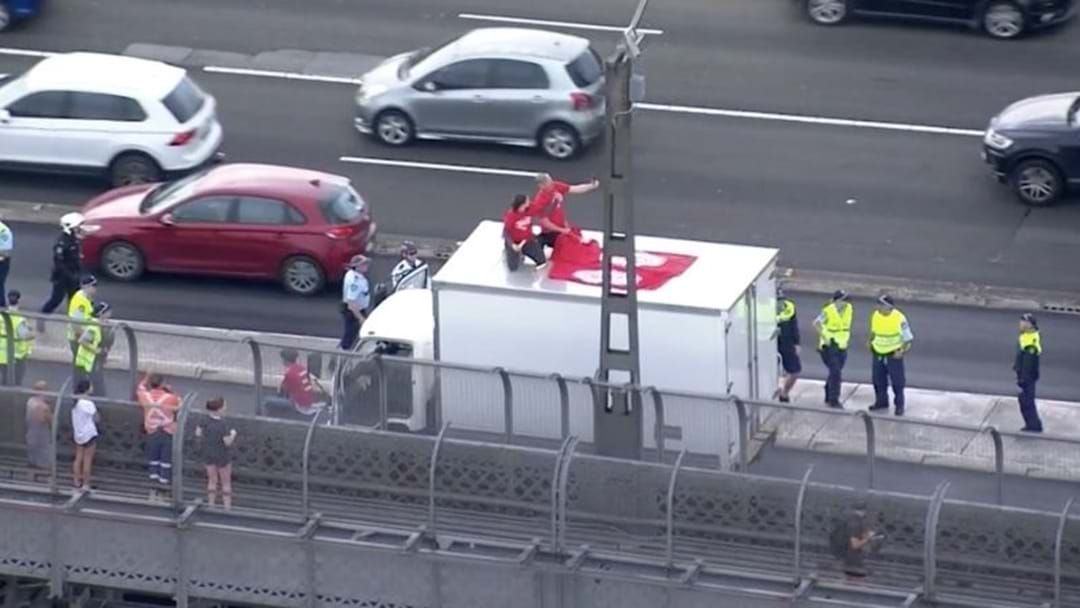The NSW Government has initiated a new offence under the Roads and Crimes Legislation Amendment Bill 2022 to form a part of the Roads Act 1993. These offences are designed to target protest behaviour with more severe punishments for impeding major roads and facilities. While both offences must be reviewed by the minister in two years time, these offences are unlikely to be repelled and will join other common offences used in public order or protests.
It is important to know that there is no obligation on the Police to provide the protestor with a direction to “move along” before taking action with this offence.
This legislation was specifically introduced because of protests on the Sydney Harbour Bridge and the ports closing down the city.
The Minister is required to conduct a review the operation of the proposed offence. The review must be undertaken as soon as possible after the period of 2 years after the commencement of the proposed Act.
There are two offences that have been created as a result:
Damaging or disrupting a major facility
Crimes Act 1900, Section 214A.
A person commits the offence if the person enters, remains on or near, climbs, jumps from or otherwise trespasses on or blocks entry to any part of a major facility if that conduct—
(a) causes damage to the major facility, or
(b) seriously disrupts or obstructs persons attempting to use the major facility, or
(c) causes the major facility, or part of the major facility, to be closed, or
(d) causes persons attempting to use the major facility to be redirected.
Maximum penalty—200 penalty units or imprisonment for 2 years, or both.
A major facility means the following—
(a) the ports of Botany Bay, Newcastle and Port Kembla,
(b) a railway station, public transport facility, port or infrastructure facility prescribed by the regulations.
Damage, disruption or obstruction of Sydney Harbour Bridge and other major bridges, tunnels and roads.
Roads Act 1993, section 144G.
(1) A person must not enter, remain on, climb, jump from or otherwise trespass on any part of the Sydney Harbour Bridge or any other major bridge, tunnel or road if that conduct—
(a) causes damage to the bridge, tunnel or road, or
(b) seriously disrupts or obstructs vehicles or pedestrians attempting to use the bridge, tunnel or road.
(c) (Repealed)
Maximum penalty—200 penalty units or imprisonment for 2 years, or both.
(2) Without limiting subsection (1) (b), a person seriously disrupts or obstructs vehicles or pedestrians attempting to use the bridge, tunnel or road if, as a result of the person’s conduct, the bridge, tunnel or road (or any part of the bridge, tunnel or road) is closed or vehicles or pedestrians are redirected.
(3) Nothing in this section prohibits conduct in accordance with the consent or authority of TfNSW, the NSW Police Force or other public authority.
(4) It is a defence to the prosecution of an offence against this section if the person charged proves that the person had a reasonable excuse for the conduct concerned.
(4A) A person does not commit an offence under this section if the conduct occurs—
(a) at the workplace at which the person works, or
(b) at a workplace owned, occupied, operated or used by an employer of the person.
(4B) This section does not apply to the extent that it prohibits conduct in relation to—
(a) Parliament House, or
(b) an office of a member of parliament.
(5) For the purposes of subsection (4) but without limiting that subsection, a person has a reasonable excuse if the conduct arose from a mechanical fault or breakdown of a motor vehicle.
(5A) A person does not commit an offence under this section if the conduct forms part of the following—
(a) industrial action,
(b) an industrial dispute,
(c) an industrial campaign.
(6) In this section—
major bridge, tunnel or road means a bridge, tunnel or road prescribed by the regulations for the purposes of this section.
vehicle includes a train.
Under the Roads Act a main road is classified as:
46 Main roads
Roads Act 1993
The Minister may, by order published in the Gazette, declare to be a main road—
(a) any public road, or
(b) any other road that passes through public open space and joins a main road, highway, freeway, tollway, transitway or controlled access road.

